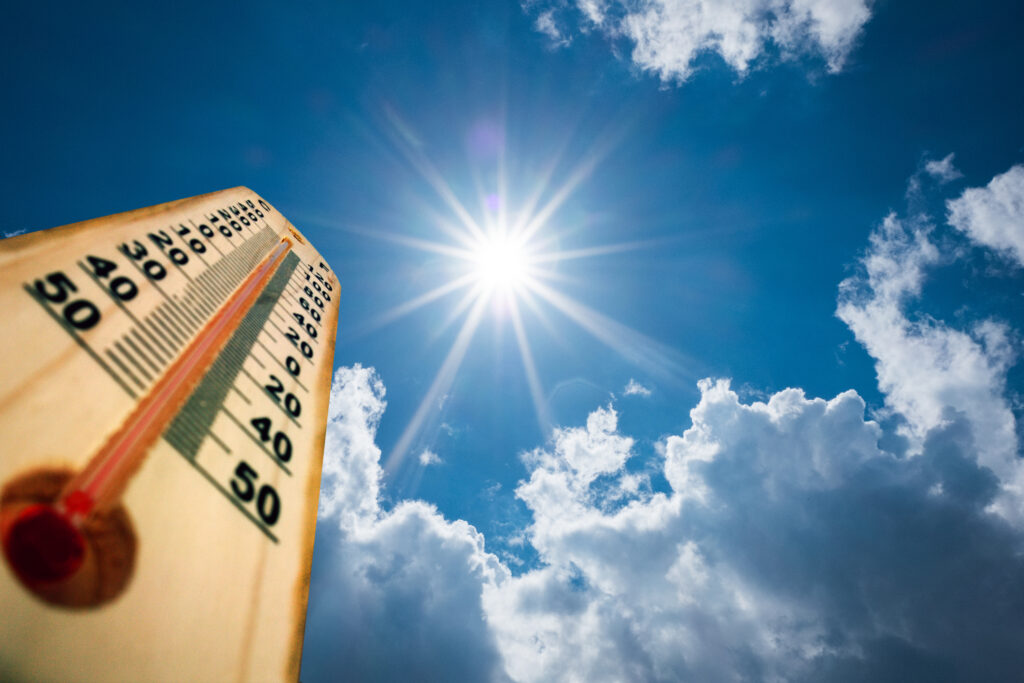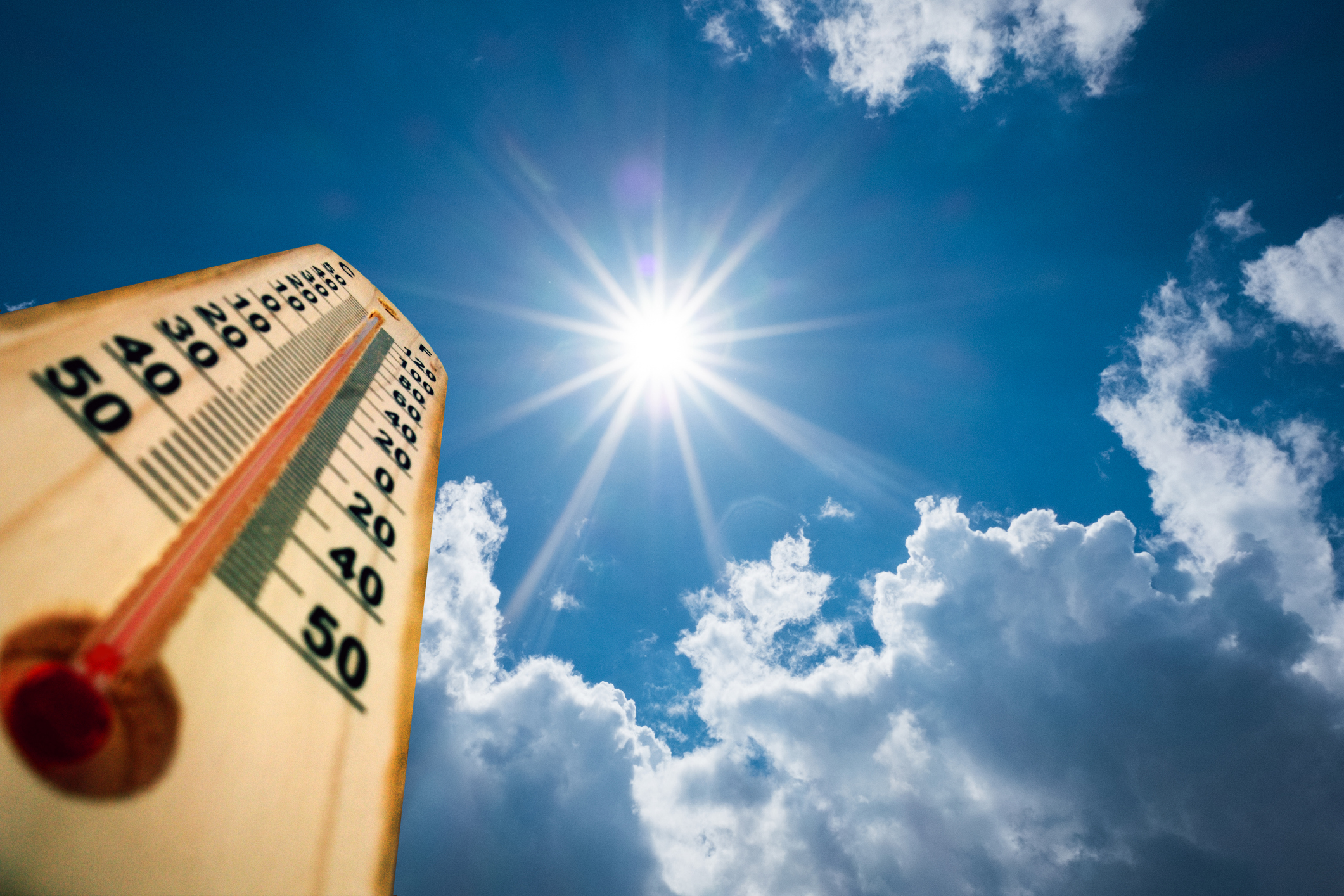Will summer heat kill COVID-19?
That’s the question on everyone’s mind right now, including yours truly. I would love nothing more than to spend a day at the beach without a mask on. Or to visit an amusement park and not need to stay at least 6 feet away from others or wash my hands constantly. Or to just walk down the street licking an ice cream cone, not worrying if I or someone I love will be lying in an ICU bed next week.
Alas, that’s not the world we live in. No one really knows whether rising temperatures will slow the spread of the coronavirus, but signs point to “probably not.”
I’ll tell you what we do know: summer heat kills people. Thousands of deaths were linked to last year’s record-breaking heat waves in Europe. And people in the United States weren’t entirely spared as multiple cities on the East Coast and in the Midwest recorded temperatures above 100º F.
As with all things deadly, this kind of extreme heat poses trouble for employers. While there’s no federal law specifically about heat illness, the Occupational Safety and Health Act of 1970 requires every employer to provide “a place of employment … free from recognized hazards that are causing or are likely to cause death or serious physical harm to employees.” This is known as the General Duty Clause, and it obligates you to protect your employee from pretty much any danger, whether it’s the coronavirus, summer heat, or Cthulhu.
On top of that, 28 states have plans (such as CalOSHA) that meet or exceed OSHA’s hazard mitigation requirements. Some states have specific regulations regarding working in the heat.
With all that in mind, and with more record-breaking temperatures likely around the corner, here are some practical ways to plan for and prevent heat-related illnesses—while continuing to fight against COVID-19.
1. Know the signs.
There are two common kinds of heat-related illnesses: heat exhaustion and heatstroke. While both call for prompt action, the latter is a medical emergency. Understanding the difference may be a matter of life and death. Symptoms of heat exhaustion include faintness/dizziness, excessive sweating, cool and clammy skin, nausea/vomiting, rapid and weak pulse, and muscle cramps. Symptoms of heatstroke include a throbbing headache, a lack of sweat, a body temperature above 103º F, hot and dry skin, nausea/vomiting, a rapid and strong pulse, and the possible loss of consciousness. Symptoms of either illness can be confused with COVID-19 symptoms—so make sure anyone suffering from any pain or unusual feeling sees a qualified medical professional immediately.
2. Know the risks.
All of the following can factor into heat illness risk:
- current temperature and humidity
- the use (or non-use) of personal protective equipment such as gloves and masks
- the time of day
- exertion—i.e. the activity level a task demands
- direct sunlight/shade
3. Familiarize yourself with the National Weather Service Heat Index.
The NWS Heat Index is a valuable measurement tool for heat-related workforce risk. The scale ranges from 80º F and 40% humidity (defined as the low end of “Caution”) to 110ºF and 100% humidity (far into “Extreme Danger” territory).
4. Identify heat illness management controls.
The greater the danger on the NWS Heat Index, the more protective measures employers should take. Those measures may include any or all of the following:
- more time for acclimation
- additional safety briefs
- additional water sources
- hydrating snacks and drinks (e.g. popsicles, sports drinks, fruit)
- periodic hydration reminders
- additional shade (e.g. with tents)
- faster job rotation
- mandatory sunscreen applications
- more frequent breaks
- cooling equipment and clothing (e.g. hard hat cooling inserts and evaporative cooling vests)
- large fans
In any case, always make sure adequate medical services are available and be ready to stop and reschedule work as necessary. You may need to take additional precautions to guard against both heat illness and COVID-19 infection. At certain temperatures, no task is worth the risk.
5. Take humidity seriously.
Relative humidity is a measure of the amount of moisture in the air. Sweat does not evaporate as quickly in a moist environment as it does in a dry climate. Because evaporation of sweat from the skin is one of the ways the human body cools itself on a hot day, high humidity reduces our natural cooling potential, causing us to feel hotter. Low humidity can also be a problem for outdoor workers in hot, desert-like climates. Sweat evaporates rapidly in low humidity, which can lead to severe dehydration when a person doesn’t drink enough water throughout the day.
6. Think indoors, too.
Heat illness can happen anywhere. Based on where you do business, your organization may be on the hook for indoor as well as outdoor conditions. California, for instance, recently developed a heat illness prevention rule that applies to indoor work areas where temperatures exceed 82° F. Many of the same precautions as outdoor environments apply to indoor settings. Keep in mind that architectural aspects, such as reflective shields and insulation, can impact a building’s internal temperature. More reasons to ensure proper ventilation.
7. Create a heat illness prevention team.
Designate people within your organization as heat safety leaders. Members of the team should be responsible for reporting, monitoring conditions, managing response protocols, implementing controls at each risk level, and ensuring the availability of supplies and equipment.
Depending on your organization’s makeup and resources, this may be the same as your pandemic response team, or it may be a better idea to coordinate a separate team. Ask us what approach is right for your organization.
8. Educate your employees.
Employees should be trained to recognize symptoms of heat-related illnesses, on what to do when symptoms are observed, and on site-specific risks and controls. In addition to their personal heat illness prevention choices, such as water intake and clothing, members of your workforce also need to be aware of their individual risk factors, including age, medications, obesity, diet, smoking habits, and medical conditions.
These 8 strategies may seem like a lot of work—especially during a pandemic—but they’re easy to implement if you have a good safety culture and workforce management system in place. KPA is here to help. See how we can keep you and your employees cool—in more ways than one.

